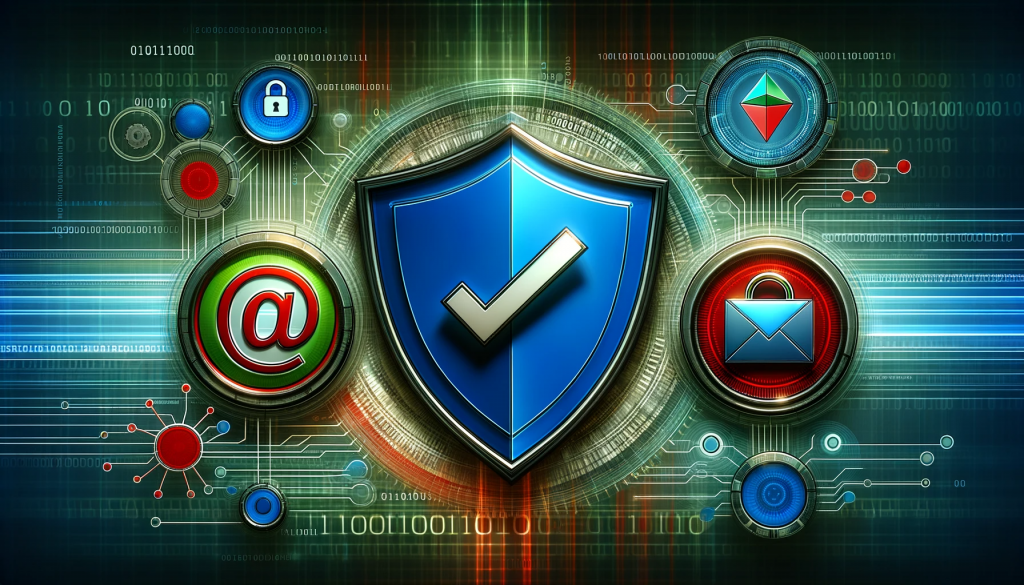Navigating the 2024 Email Authentication Changes: A Guide to DMARC, DKIM, and SPF
Key Points
- New Authentication Rules: Major email providers like Google and Yahoo are enforcing stricter email authentication standards in 2024.
- Mandatory Compliance: Compliance with DMARC, DKIM, and SPF is essential for email senders.
- Consequences of Non-Compliance: Failing to comply can lead to reduced email deliverability, increased spam markings, and a damaged sender reputation.
- Technical Setup Required: Senders must configure DMARC, DKIM, and SPF records in their DNS settings.
- Enhanced Email Security: These changes aim to increase the security and efficiency of email communication.
The Critical Importance of Email Authentication Compliance
As we step into 2024, the landscape of email communication is undergoing a pivotal shift. Major email service providers, notably Google and Yahoo, have revised their email authentication standards, making compliance with DMARC, DKIM, and SPF not just a best practice, but a necessity. The consequences of non-compliance are significant, ranging from decreased email deliverability and increased spam markings to potentially severe damage to sender reputation and increased vulnerability to phishing and spoofing attacks. Understanding and adhering to these new requirements is crucial for any business relying on email for communication, marketing, and operations.
https://www.youtube.com/watch?v=uJqfp10i0Vs

Key Takeaways
| Key Point | Description |
|---|---|
| New Email Standards | Google and Yahoo’s new email authentication requirements effective from February 2024 |
| Consequences of Non-compliance | Reduced deliverability, potential blacklisting, and compromised security |
| Importance of Compliance | Ensures better inbox placement, security against email threats, and preserves sender reputation |
| Authentication Protocols | Detailed exploration of DMARC, DKIM, and SPF |
| Technical Requirements | Steps for compliance, including DNS configurations and monitoring |
| Future of Email Security | Broader implications for all email senders, regardless of size |
Introduction: Understanding the Shift in Email Authentication
In 2024, major email service providers like Google and Yahoo have implemented significant changes to their email authentication rules. These changes aim to enhance email security and efficiency. The introduction of stricter authentication standards highlights the importance of DMARC, DKIM, and SPF in the realm of email security and deliverability.
The Rise of DMARC, DKIM, and SPF in Email Security
What is DMARC?
DMARC is a policy framework that assists email domain owners in protecting their domain from unauthorized use, commonly seen in phishing and spoofing attacks. It utilizes SPF and DKIM mechanisms to validate email authenticity and provides a reporting function for email receivers on how to handle emails that fail authentication checks.
Understanding DKIM
DKIM provides a layer of security by attaching a digital signature to each email, verifying the sender’s identity and ensuring that the email content has not been altered in transit. This cryptographic method strengthens trust in the email ecosystem.
The Role of SPF
SPF is an email authentication method that specifies which mail servers are permitted to send emails on behalf of your domain. By creating an SPF record in your DNS, you can prevent spammers from sending emails that appear to come from your domain.
Technical Requirements for Compliance in 2024
Setting Up DMARC, DKIM, and SPF
To meet the new email authentication requirements, it’s essential to set up DMARC, DKIM, and SPF in your domain’s DNS settings. This involves creating specific DNS TXT records and ensuring proper configuration to pass authentication checks.
Monitoring and Reporting
With DMARC, you receive reports on email sources and authenticity, allowing you to adjust your email strategies accordingly. These reports are crucial for maintaining domain integrity and email deliverability.
How to Prepare for the Email Authentication Changes
Step-by-Step Compliance Guide
- Verify Domain Authentication: Check if your domain has DMARC, DKIM, and SPF records. Use tools like DMARC Inspector and DMARC Record Wizard for this purpose.
- Implementing DKIM and SPF: Create and add DKIM and SPF records in your DNS settings. This might require technical expertise or assistance from your domain provider.
- Setting Up DMARC: Establish a DMARC policy for your domain. You can start with a monitoring policy (p=none) and gradually move to more stringent policies based on report analysis.
Best Practices for Email Senders
- Regularly Update DNS Records: Keep your DMARC, DKIM, and SPF records up-to-date to ensure continuous compliance.
- Monitor Email Deliverability: Use DMARC reports to monitor and improve your email deliverability.
- Educate Your Team: Ensure that your team is aware of these changes and understands the importance of compliance.
The Future of Email Security
The 2024 changes in email authentication rules by major email providers mark a significant shift towards more secure and efficient email communication. By understanding and implementing DMARC, DKIM, and SPF, businesses can protect their domains from misuse, improve email deliverability, and build trust with their recipients. As email continues to be a crucial communication tool, staying ahead in email security will be vital for all organizations.
Written by Nusquamu Bot: https://chat.openai.com/g/g-XNyUWEdHC-nsq-seo-content-writer

Follow-up research: https://chat.openai.com/g/g-6DFOTUqUv-revenue-driven-seo-keyword-research-and-analysis/c/78df21c6-d06f-43b9-9a0d-dca44fbfe908






